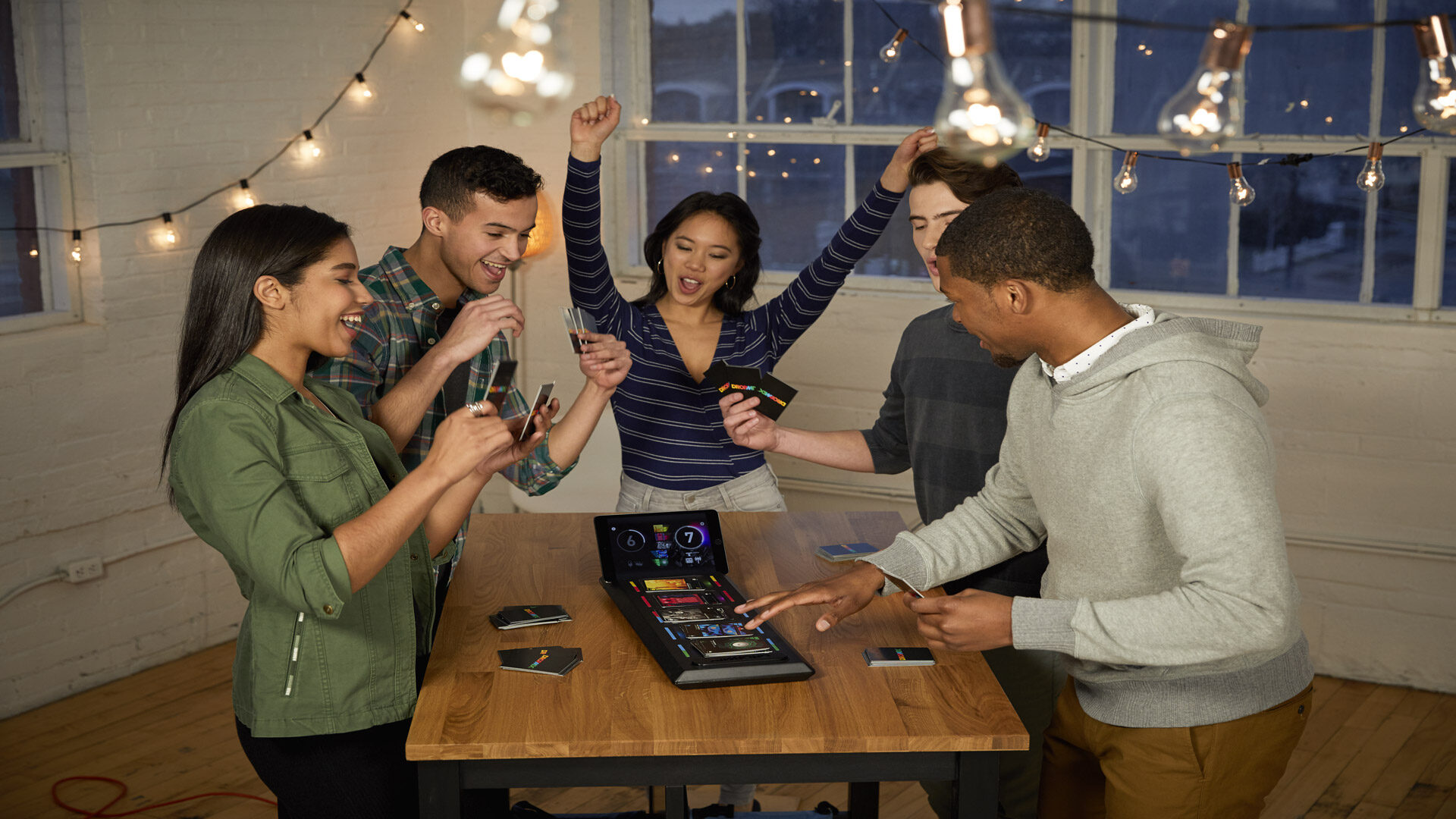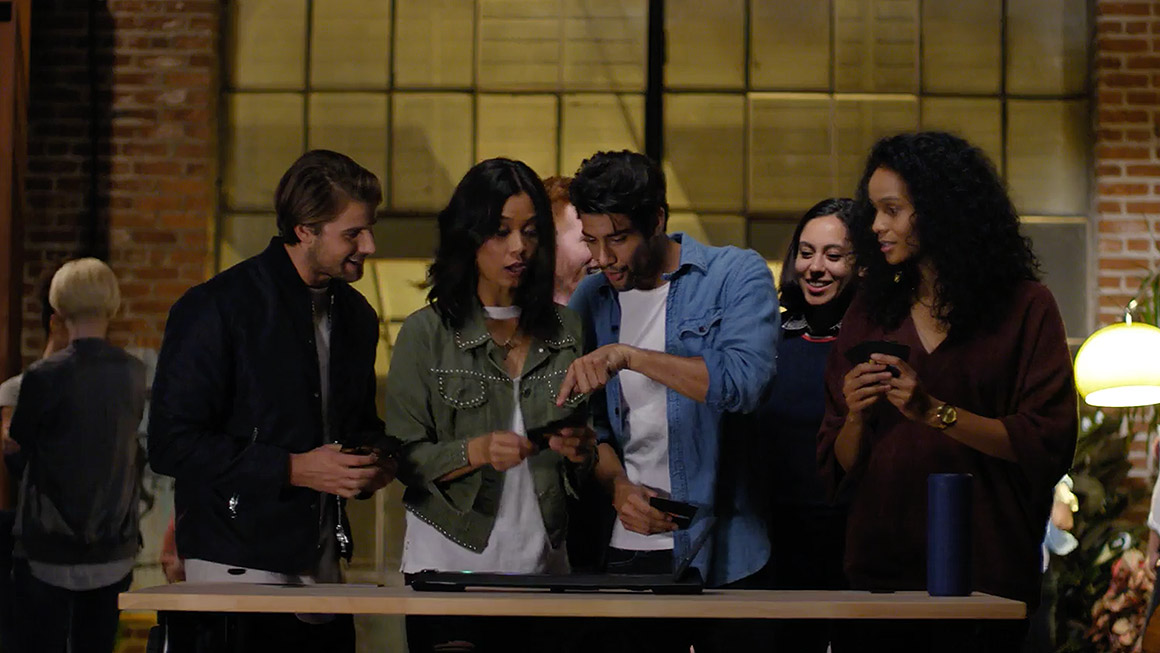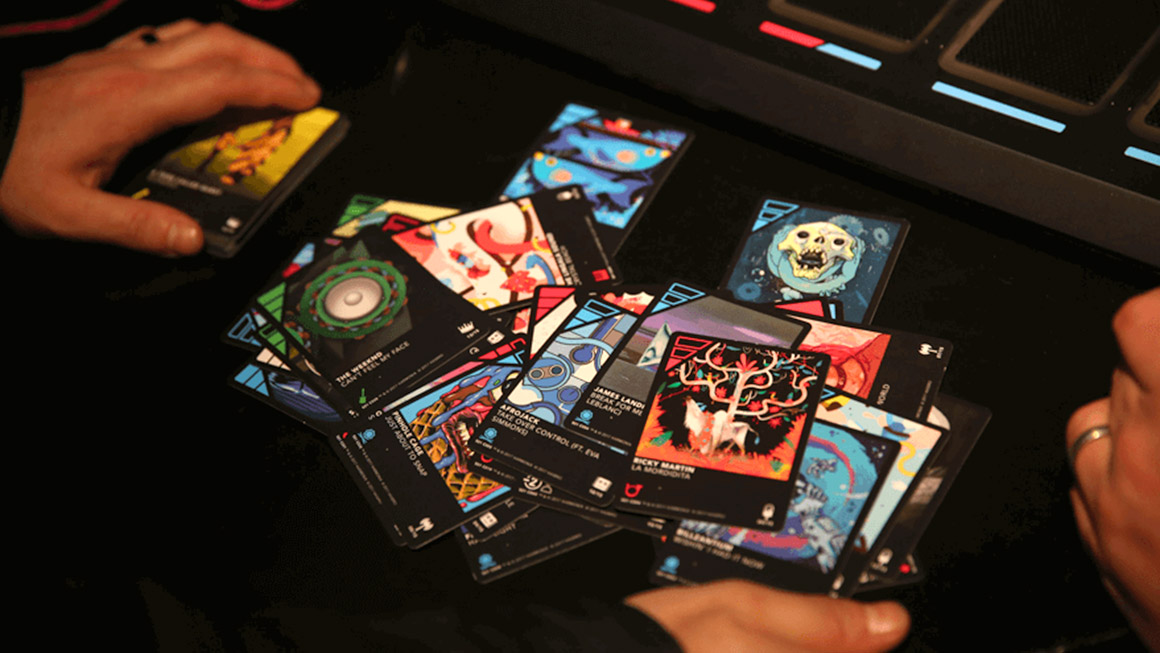DropMix – Six Months Later
A pre-E3 event last year was the first time I got to check out Harmonix and Hasbro’s crazy new project called DropMix. The idea, for those of you who may never have seen or heard of the collaboration, was the combining of a physical plastic deck, software running on a smart device of your choice, and RFID-powered cards to create a cooperative or competitive game out of mixing together different tracks from popular songs.
I walked away from my hands-on with the game having legitimately enjoyed it—but also holding a number of concerns over the idea and if it’d be a hit with gamers. When DropMix launched in late September of last year, the slew of major releases and other work projects meant that we weren’t able to give it a proper review. So, instead, I’ve decided to do something that we’ve often talked about doing with a number of other games that have come out over time—return to DropMix six months after its launch, and see where it stands at this point.
Basically, I had four major concerns for DropMix and its potential future: longevity, music selection, the technology itself, and finally, the price of entry. So, let’s look at those four points, and see if my mind has changed—or not changed—in these past six months.
Point #1: Longevity
The problem that faces any sort of entertainment that brings with it a level of “gimmick” to its execution is how long that gimmick will remain feeling fresh, and if you’ll still want to return to whatever it is after some amount of time has passed. We can look back to the era of Bemani/Rockband/Guitar Hero/etc. for perfect examples of this: there were plenty of people who stocked up on plastic instruments to rock out with with friends, only to see those costly peripherals collecting dust soon after.
My opinion of DropMix from the beginning was that it’d be something that you’d probably not play all of the time, but which would be fun to break out every now and then for a party, a family gathering, or just in a moment of boredom. I continue to feel that way at this point—and I say that as a good thing. I still legitimately have fun with DropMix, and I think it has the chance to live on longer than other similar “real device + digital game” ideas that have come out over time. I see the DropMix more as a board game, something you have on your shelf that you can pull out now and then and enjoy with a group that doesn’t require the dexterity to hit numerous buttons in various patterns or other deeper video game knowledge.
There is one major threat to that potential longevity, of course, which leads to…
Point #2: The Music Selection
Both the strength and weakness of DropMix is its music, and that’s where the game could end up running into trouble months or years from now.
The problem with games based around music is that music is such a personal thing, and what a particular artist or song means to us today might not be the same tomorrow. One of the reasons I think DropMix works better as a “play now and then” kind of game is that helps its music selection not wear out as fast, yet that happening still seems to be an inevitability. Plus, any time you include the music of a popular artist, you run the risk of that artist’s value fading in the not-too-distant future. Looking back at the original pack of cards, we had eternal safe bets like the Jackson 5, Gloria Gaynor, Rick James, or Beethoven, while we also had artists that may not age as finely such as Bruno Mars, Ed Sheeran, Fall Out Boy, or—as much as I currently love her—Carly Rae Jepsen.
So, I think DropMix needs a steady stream of new card packs, both to keep the game from feeling like you’re just crafting the same remixes over and over, and to keep its musical library a little more up to date with smart choices. Thankfully, there has been a decent stream of new cards released since the game’s launch, both through the 16-card Playlist Packs—which have given us new Pop, Hip-Hop, and Country cards—and the 5-card Discovery Packs, bringing their own assortments of more random genre additions. Those most recent expansion cards have featured a mix of new songs from artists we already had cards for, additional tracks that were missing from previous songs, or artists we didn’t have before, such as The Black Eyed Peas, Technotronic, Fifth Harmony, Anderson .PAAK, Joliet, and the Zac Brown Band.
I admittedly worried that DropMix would be released and then no new card packs would come out if it wasn’t a hit right out of the gate. While I don’t know how the game has done sales-wise, I’m at least glad that we have gotten some expansions beyond the initial base set. The big question now, of course, is if we’ll get more from here. I do know for sure that at least one additional Playlist Pack is announced as coming—”Chiller,” which focuses on dance/electronica tracks—but we’ll need to see how support keeps up from there. If there won’t be many more new cards coming going forward, anyone who has been holding off will need to decide if the current selection of music will be enough to keep their interest in the long run.
Oh, and I might also mention that the most recent hip-hop Playlist Pack is exclusive to Toys ‘r Us—so, you know, that’s probably something you’ll want to pick up ASAP if you’re interested.
Point #3: The Technology
While you might think the selection of music is the most important thing to worry about for a music-based game, being the type of person that I am, I actually had more concern over DropMix’s technology and hardware when trying to decide if it was something I’d recommend.
When I previously wrote about my thoughts on the game, I said the following:
“I think DropMixneeds one of three different revisions to really give it a chance: either drop the price of the main package, give it the proper built-in hardware and display to not require a separate smart device, or give it the tech needed to output the game to a TV without needing any additional hardware to play.”
I’ve softened a bit in how big of a deal I think that is when it comes to actually having and playing DropMix, but I also still believe that I’m right in that assessment. First of all, the main deck being battery-powered only is a huge pain in the butt, especially if you’re someone like me who already has their rechargeable batteries fueling a whole host of other devices, controllers, and remotes. Really, even just having a standard USB port where I could plug in a generic USB-driven wall adapter would have been a huge help. However, doing something like that could have then opened us up to an even better solution: something that would let us power both the required smart device and the deck together at the same time. I really don’t want to use my iPhone when playing DropMix due to how small its screen is (even with owning an 8+), but like many people (I’m sure), I don’t use my iPad enough to ensure it’s always got enough of a charge for even a game or two.
Really, the absolute best solution we could have had for DropMix—and this might be the sort of thing someone out there has put together—would have been to slap in a cheap computing device (like a Raspberry Pi or whatever), a cheap LCD display (because, really, you’re not showing anything all that complicated), give it ports for power, video, and audio out (which something like the Pi has), and you’ve got that all-in-one device. I’d be far more forgiving of a smaller screen if it were built in, and while a cheap (or no) speaker wouldn’t be the best solution for a music-based game, you kind of already have that given most smartphones aren’t really meant to pump out high-quality audio at any decent volume.
As it is, I do still think DropMix is a bit of a hassle if you want to play it properly, but it’s not an unmanageable one, nor is it a deal-breaker. It just feels like an experience that you have to plan to have, versus something that you can break out at a moment’s notice should the occasion arise.
Point #4: The Price
The single biggest hurdle DropMix had going against it in my opinion was the price, and that’s actually one of the areas in which things have gotten better in the past six month. Paying $99.99 for the deck and 60 cards—while still needing additional hardware like a smart device—just seemed way too expensive for me, and if anything was going to kill the potential that DropMix held, I was pretty sure it was going to be its price tag.
Pricing DropMix at various retailers today, however, I’ve found many—including Amazon, Target, and Walmart—that have it new for $79.99, which I think is a much more reasonable entry price. Gamestop, meanwhile, has it new for $49.99, a price that I consider to be perfect “impulsive buy” territory. It’s pretty easy to avoid paying full price for the main DropMixpackage at this point, which is good, because I think that extra $20 (or more) would be better spent getting yourself more cards to help build a more enjoyable experience.
And now, of course, I’m going to say something to totally contradict myself: I think I could have been okay with paying $129 or even $149 for DropMix—given, of course, that we got all of those technology inclusions I talked about above. I know why Harmonix and Hasbro wouldn’t want to slap a five-digit price onto the device if that was the range they were going to end up in, but DropMix would have had more value to me as a self-contained deck versus one I need extra devices, speakers, cables, and/or batteries for.
Given what it is, however, DropMix is in a far better place in my mind now that many major retailers seem to be giving it some level of discount. The question will be if that lower price helps give the game a bigger player base, or if it came too late to miss the initial wave of interest consumers would have had.
Final judgement
When I first played DropMix in the early part of summer last year, I thought it was fascinating both as a game and an idea, and I still feel that way today. What was put together here is something legitimately cool, and Harmonix’s tech for mixing together pieces of different songs remains seriously impressive to this day. The core idea of DropMix was never in question for me—it always came down more to the way that idea was executed.
Six months later, some of my concerns seem justified, while others have proven to not be as big of a deal as I thought they might. It’s easier for me to recommend checking out DropMix to those curious about it given the lower price of entry and the more expanded music selection, but that recommendation would also come with a bigger caveat of not knowing what support will be looking like another six months from now.



